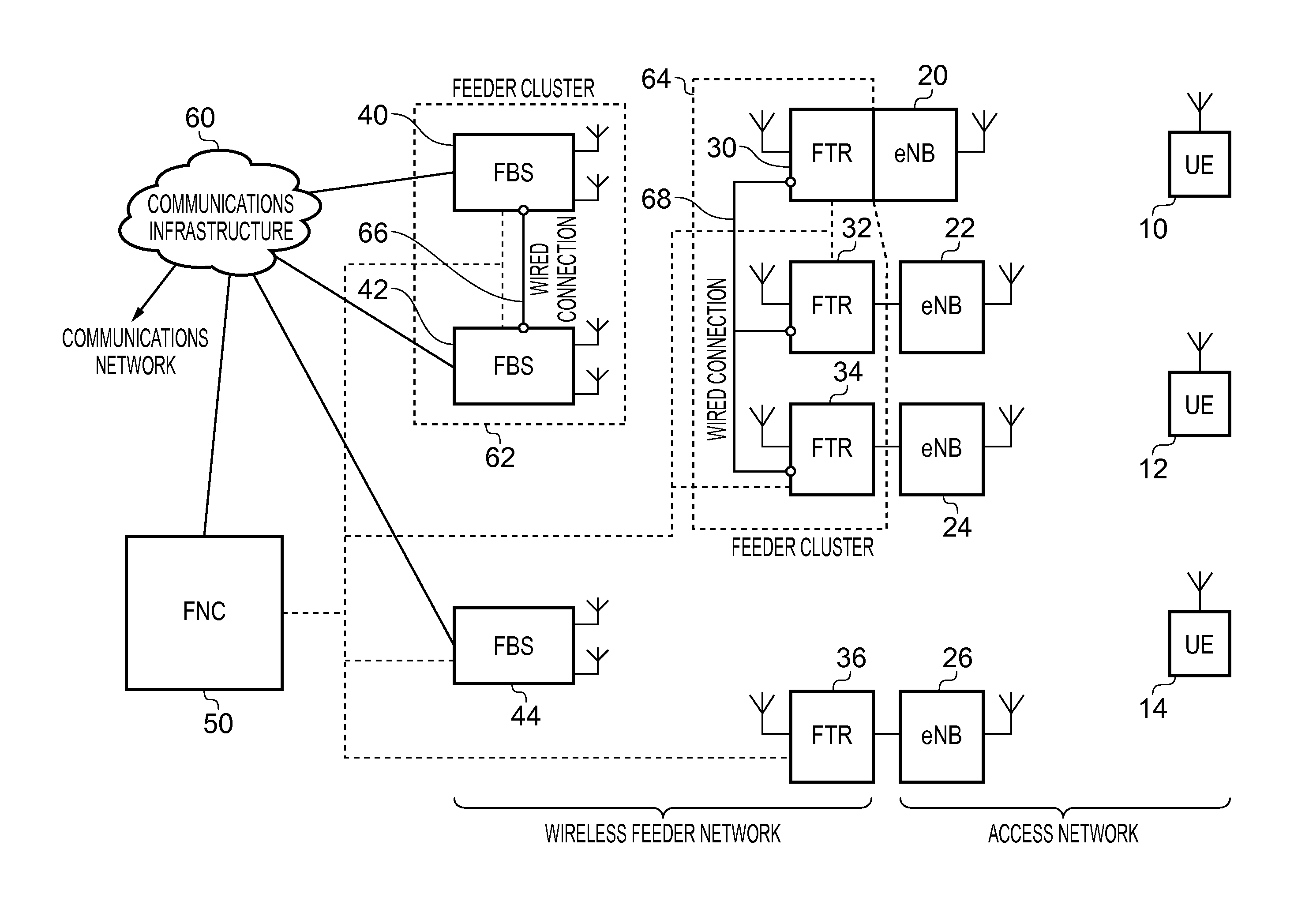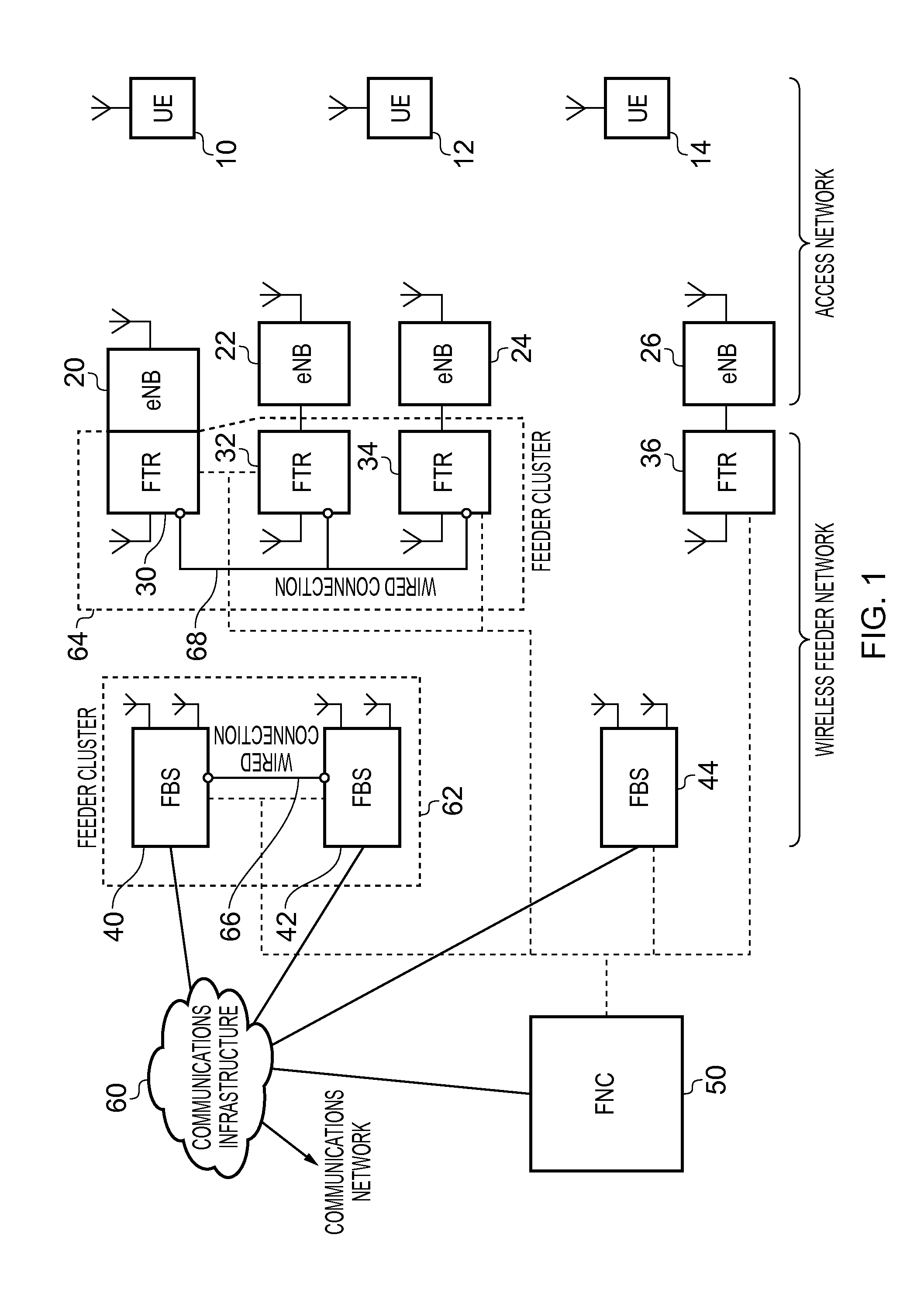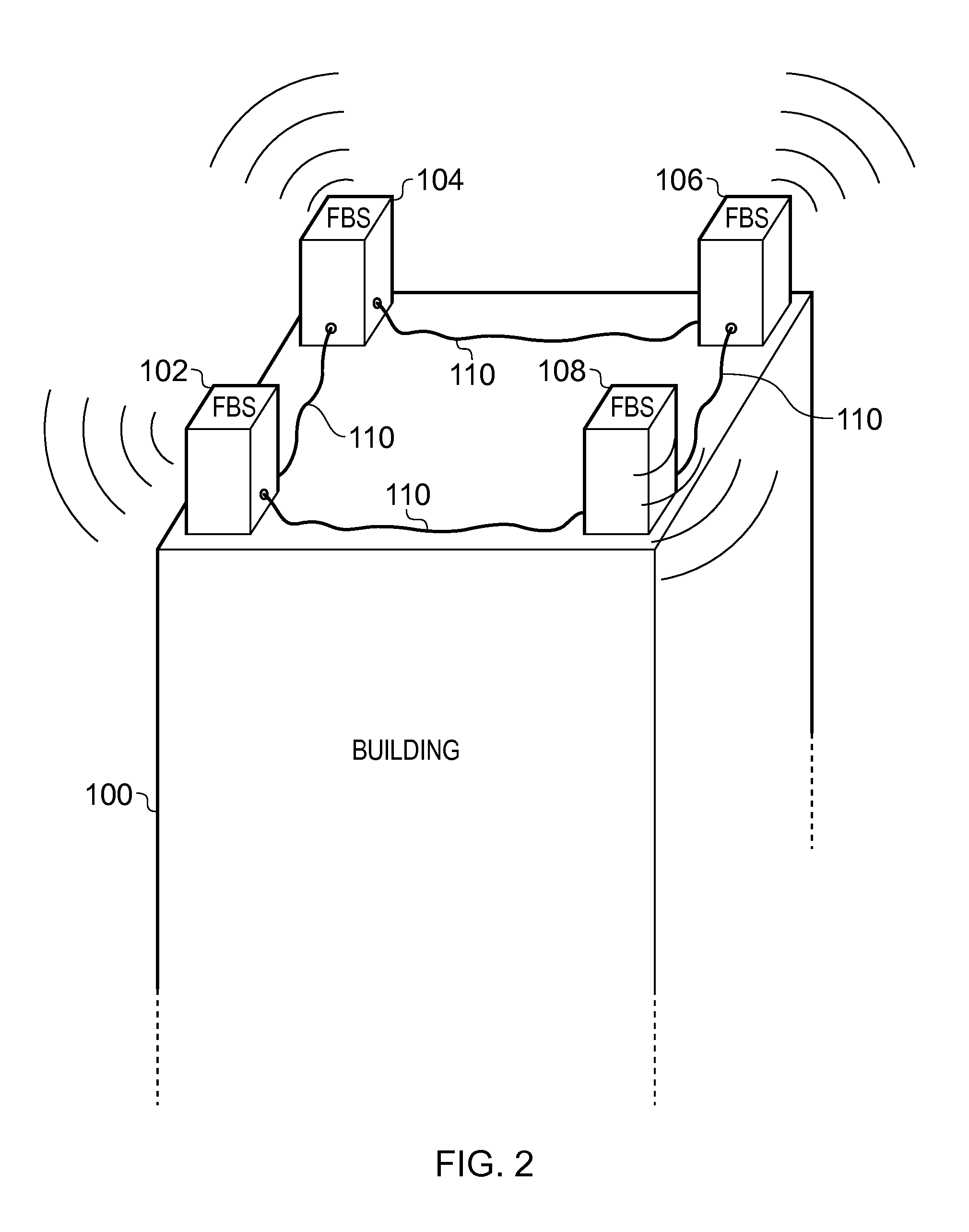Cooperative Components in a Wireless Feeder Network
a feeder network and wireless technology, applied in the direction of wireless communication, wireless communication, transmission path sub-channel allocation, etc., can solve the problem that data transmitted via any given feeder link may not always be reliably received by its intended recipient, and achieve the effect of reducing the bandwidth requiremen
- Summary
- Abstract
- Description
- Claims
- Application Information
AI Technical Summary
Benefits of technology
Problems solved by technology
Method used
Image
Examples
Embodiment Construction
[0080]FIG. 1 schematically illustrates a wireless feeder network which is arranged to couple access base stations of an access network with a communications network in one embodiment. The illustrated components of the access network are the items of user equipment (UE) 10, 12, 14 in communication with access base stations (eNB)20, 22, 24, 26. Depending on network loading and on the current geographical position of a given UE, that UE communicates wirelessly with a selected one of the access base stations such that uplink data can be communicated from the UE onwards towards the communications network and conversely downlink information received from the communications network can be transmitted to the intended UE. The access network could be configured to perform this communication according to a number of known protocols, such as Wi-Fi, WiMAX, LTE and so on, the specific details of which are not discussed further herein.
[0081]Each access base station of the access network is associa...
PUM
 Login to View More
Login to View More Abstract
Description
Claims
Application Information
 Login to View More
Login to View More - R&D
- Intellectual Property
- Life Sciences
- Materials
- Tech Scout
- Unparalleled Data Quality
- Higher Quality Content
- 60% Fewer Hallucinations
Browse by: Latest US Patents, China's latest patents, Technical Efficacy Thesaurus, Application Domain, Technology Topic, Popular Technical Reports.
© 2025 PatSnap. All rights reserved.Legal|Privacy policy|Modern Slavery Act Transparency Statement|Sitemap|About US| Contact US: help@patsnap.com



